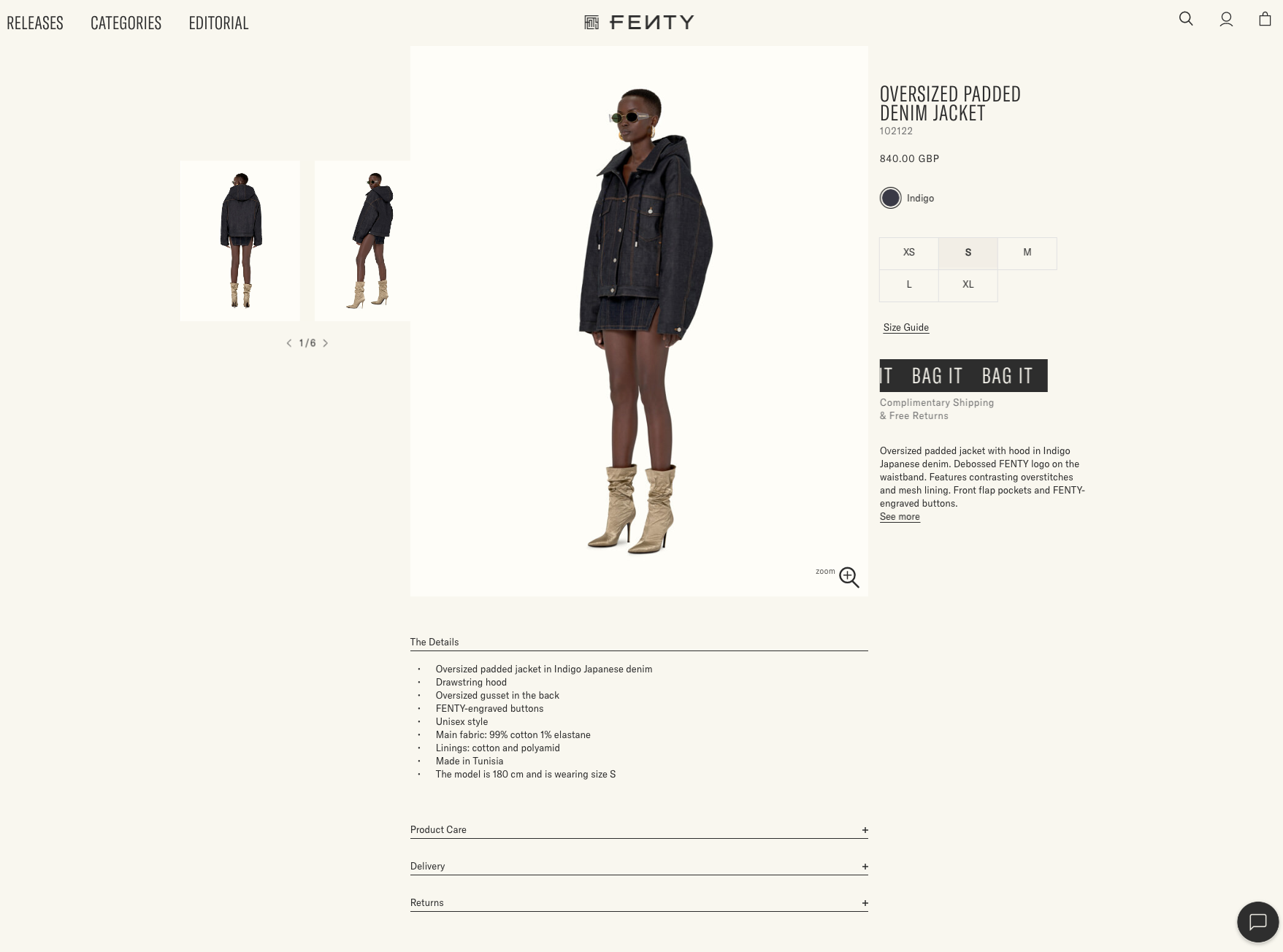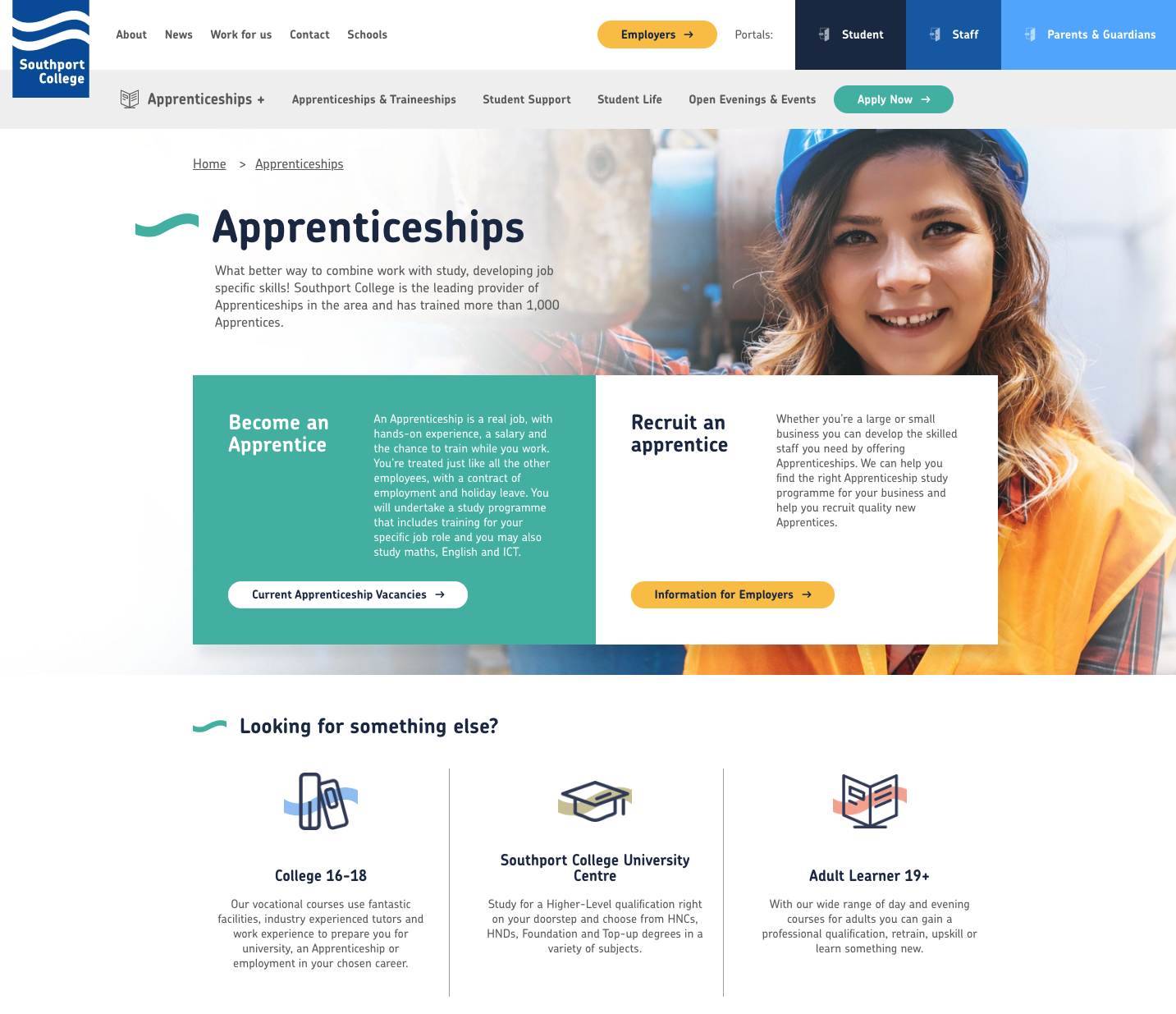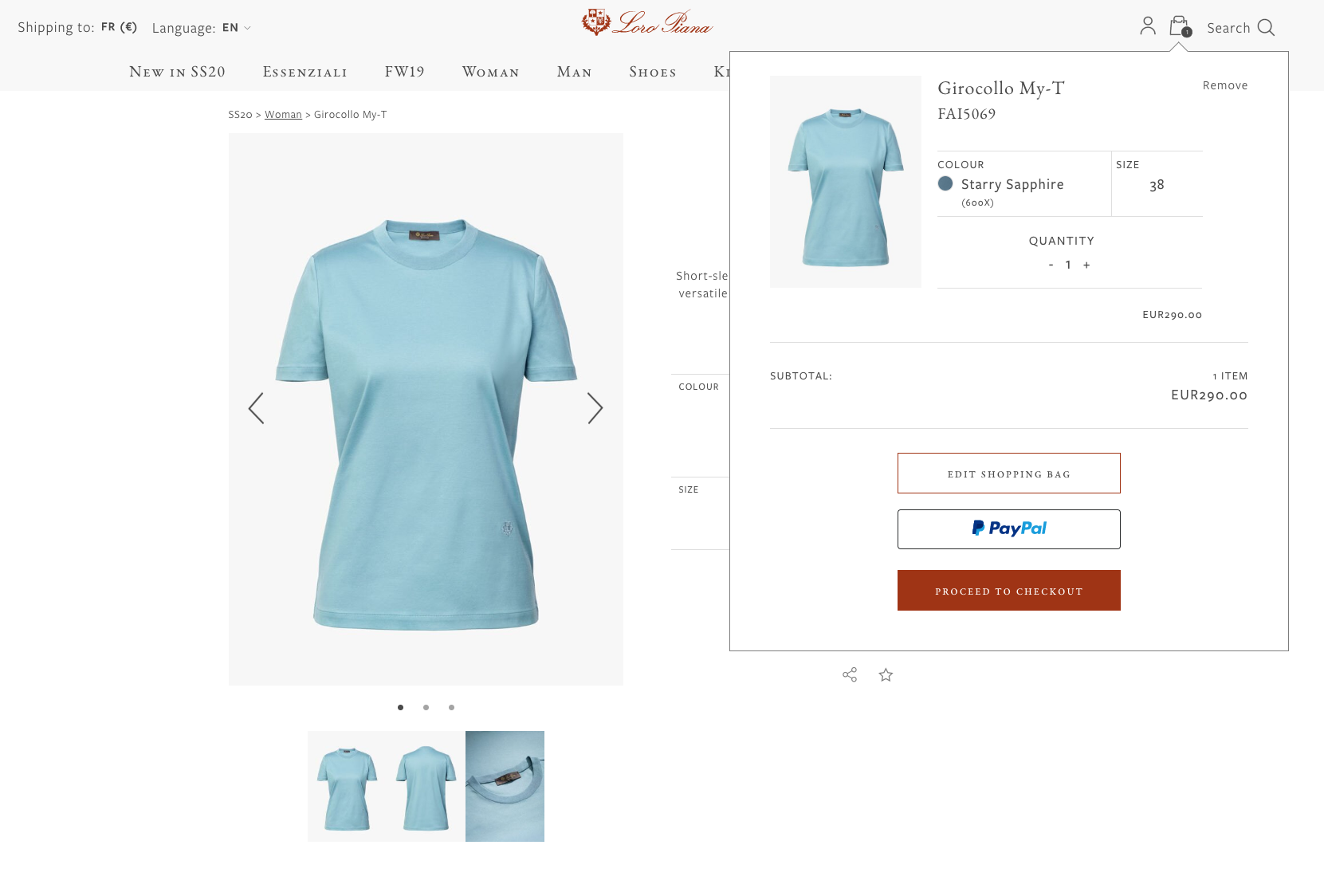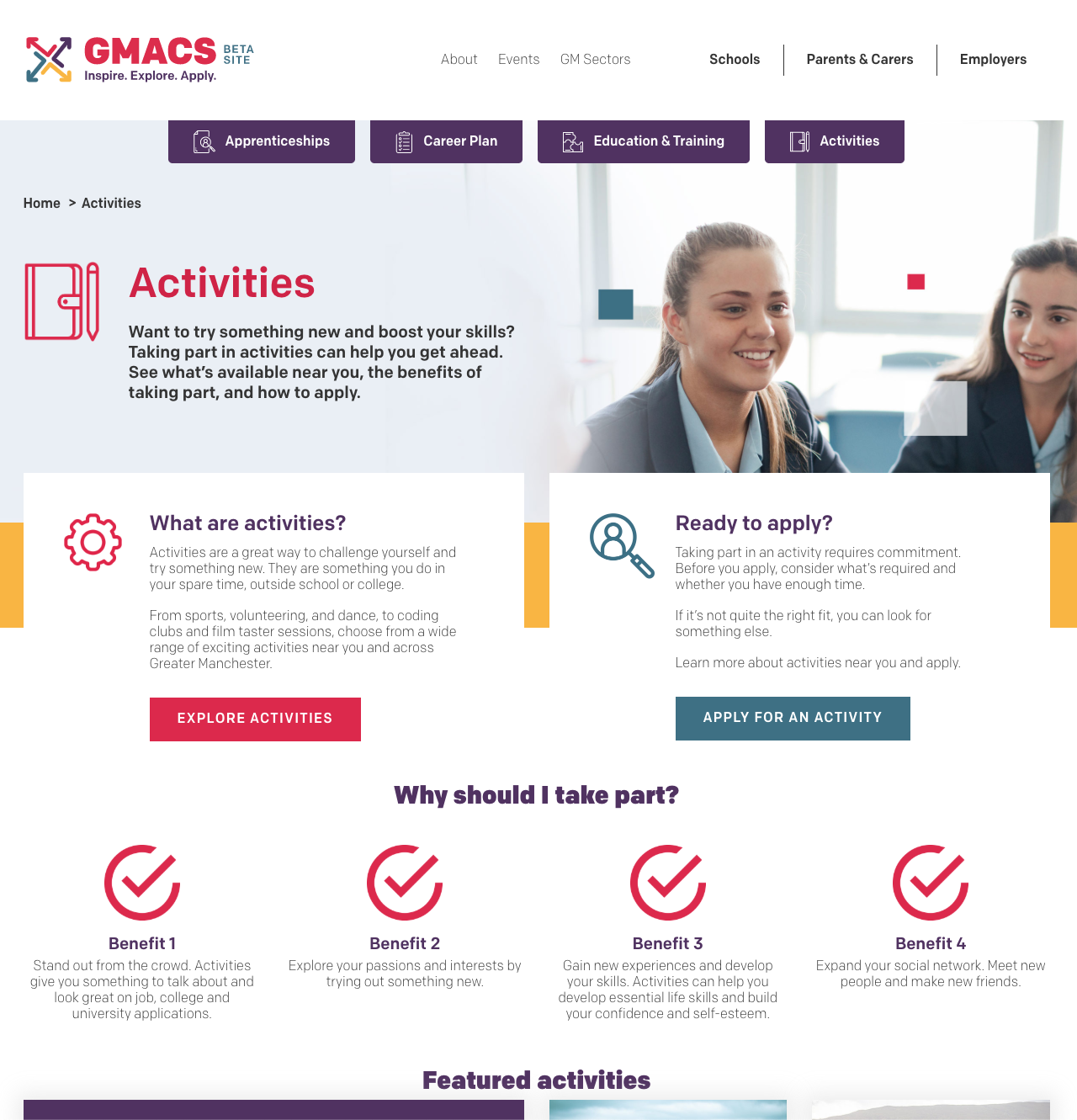DESIGN LEAD
There is more to design than just creation. Leading a team of designers and collaborating with multiple disciplines is an integral part of the service offered by Charlotte:
Mentoring junior to senior designers, with a commitment to developing all. Delegation and feedback are key when leading a team to deliver their best
Delivering designs and prototypes to a wide range of stakeholders, including core decision makers within the business
Cross disciplinary workshop delivery and facilitation, developing digital strategic understanding
Cross platform, device and build knowledge, educating wider team members on the complete design and development process
Excellent project management skills from Waterfall to Agile methodologies, proficient in coaching in these areas
information architecture
"It's not about the pretty colours or shiny buttons but the real guts of your website. Information architecture is about getting your hands dirty, to deliver the most appropriate and efficient site structure, along with an engaging and exciting user experience". - Charotte Barnett
Information architecture (IA) is the study of your websites content and the complex digital systems and platforms used to deliver this. The IA for your site depends largely on your business and user goals. If a user can complete their tasks in the most efficient, engaging, appropriate and accessible way then the architecture is sound and will deliver the best user experience automatically. Having identified the user goals during the detailed user experience investigation, your site can be re-architected based on these results and findings, producing a usable and accessible website.
IA deliverables
Site content audit - what content have you got, what are we keeping and what's being thrown out?
Requirements - what does the site need to achieve from a user and business perspective?
Sitemap - the structural design and positioning of pages within the site
Wireframes - detailed templates for mobile, tablet and desktop architecture showing content type, layout, and accessible functionality, completed in Omnigraffle, Visio, Axure and by hand when needed
High Fidelity Prototypes - interactive detailed prototypes, completed in Axure, Omnigraffle or Sketch, highlighting key functionality, processes and interactions
You would expect to receive a range of these documents, in the required format, when working with dirty digital. Right from the start the project will come alive with hand drawn sketches, which will be converted into digital documents later in the process. It is vital to visualise the IA rapidly so that we can take into account changes and differences in requirements early in the process.
It is key to get exactly what you need and want when working with dirty digital, so we pride ourselves on delivering documentation in the most useful and efficient format throughout the project. We see the IA of a website continually evolving so all of your documents will reflect this, therefore allowing continued development.
Take a closer look at some of the dirty digital projects.
user experience
"Delivering an efficient and engaging user experience (UX) will promote increased traffic to your website, resulting in an increase in ROI"
If you are refreshing or building a new website from scratch it is vital to deliver the best and most engaging UX possible. Before any work can be done it is key to identify the strategic aims of the website, content and business as a whole. This is then rolled into both the business and user needs analysis stage, identifying a futureproof and flexible strategy for your website.
In delivering a great UX a selection of qualities must be met. Each quality is looked at individually and at dirty digital when working with you, we will enhance each quality if and as required:
Useful - is your site, and its content useful? Are you delivering a useful experience?
Usable - what is the usability of your site like?
Findable - can you really find what you need on the site through the navigation, browse and searching capabilities, via primary, secondary and tertiary navigation elements?
Accessible - is the content accessible to the widest population and proportion of different users?
Desirable - is the brand, identity, look and feel and functionality desirable to your users?
Credible - do your users trust and believe your content and is the functionality used to deliver this content correct and credible?
Valuable - does your site deliver value to customers and clients?
ux deliverables
What can you expect from dirty digital when investigating the UX of your website? It is important to have something to measure against, to prove that the UX of you site has increased, so at dirty digital we will create a selection of materials including; Personas, Scenarios and User Goals.
personas
Personas are created to represent the archetype (ideal example) of a user of your website. They are created from requirements gathering, as well as speaking with real customers and stakeholders. A persona should identify a target group of audience members,and identify demographic data including: age, interests, lifestyle etc. From personas scenarios and goals can be developed.
scenarios
A scenario identifies a plausible situation that the user may be in where they wish to find out information, or to complete a task. A scenario should reflect a real life situation relating directly to the users needs and offerings from the online business.
user goals
User goals provide the context to personas and scenarios. They are the precise aims of the user, which relate directly to the completion of tasks on the website. It is important to note that business goals are also identified independently during the UX process.
These are the fundamental deliverables for any good UX company, providing tangible materials that can be measured against at a later stage in the UX process when the usability of the site is tested. These deliverables are used alongside expert knowledge of the best practices to develop the information architecture. It is important to note that some or all of the above documents can be created and used throughout the project lifecycle.
usability
"The study of online usability refers to the perceived efficiency and quality of the content and interaction delivered to users through a website"
Usable and accessible sites are the key to promoting a good and engaging user experience for any online business. An excellent user experience will result in repeat visits to your website, trust in the online business and brand, and above all happy customers. Increasing the usability will automatically enhance the user experience.
When designing a website User Centered Design (UCD) principles are taken into account at all stages, therefore designing the site with your users in mind, ensuring a high standard of usability. All users have to go through the 'learning' phase when first visiting your site and it's the speed at which they learn to interact with your site that correlates with the usability.
"Quick and easy learnability = Good and efficient usability"
heuristic evaluations, expert critiques
A heuristic evaluation is a common and popular investigation technique used to identify usability problems on your website or user interface. Recommendations identified during the investigation are then fed back into the iterative design process. A heuristic is a clearly defined usability principle that an investigator can test the usability of your site against.
user testing
Testing with 'real life' users is a must even if simple paper based, low-fidelity testing, is all you can complete. User testing is great for live websites, looking for a redesign, as well as brand new websites, to investigate and update live architectures. The type of testing you need can be identified during the project process, with experience in both formal lab testing and more casual, rapid testing, you will get great results in all cases and it will guarantee increased usability of your digital platforms.



